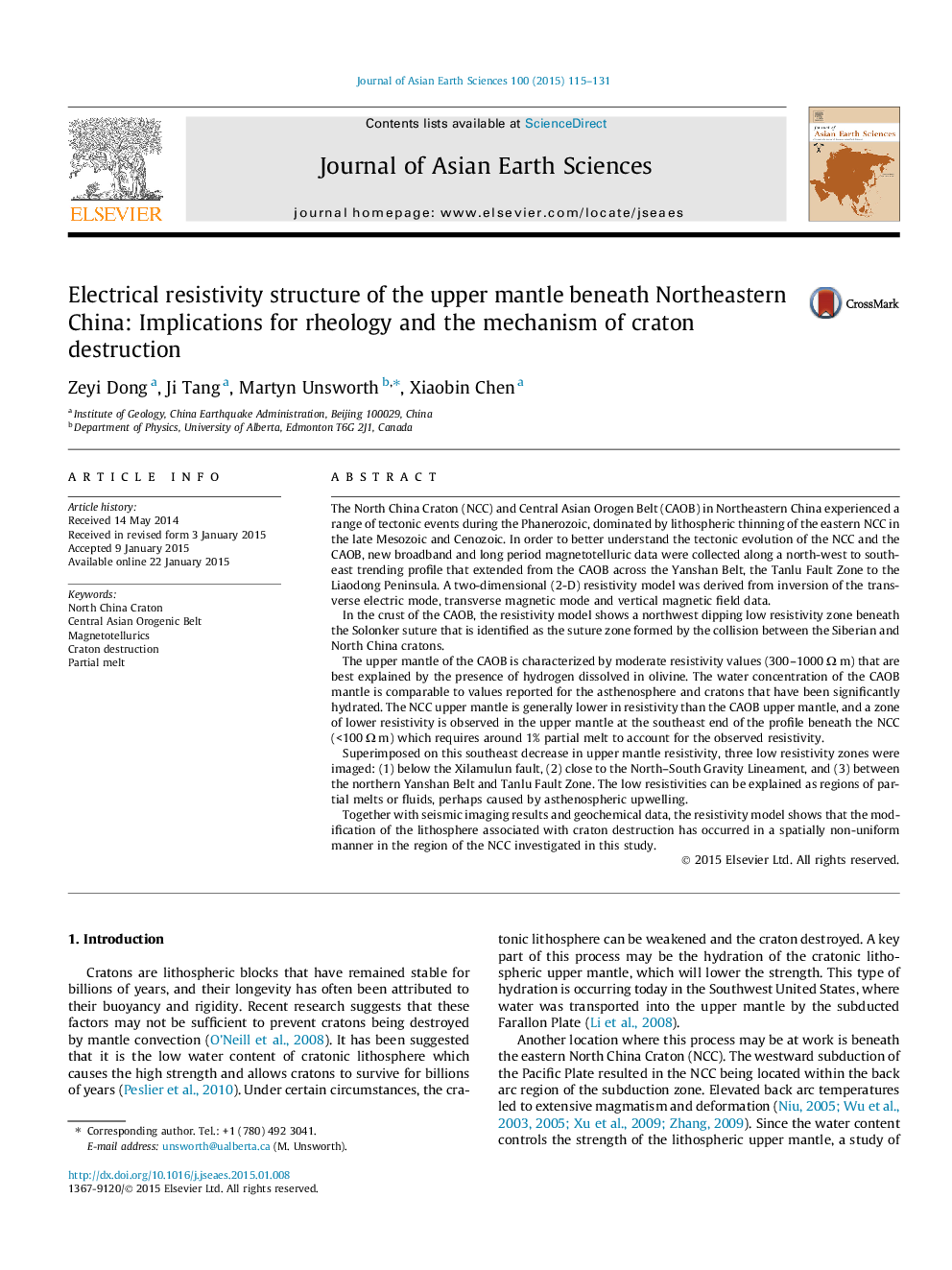| کد مقاله | کد نشریه | سال انتشار | مقاله انگلیسی | نسخه تمام متن |
|---|---|---|---|---|
| 4730475 | 1640369 | 2015 | 17 صفحه PDF | دانلود رایگان |
• MT data image the electrical resistivity structure of the North China Craton.
• Estimate the water content of upper mantle.
• Thinning of the North China Craton lithosphere occurred in a spatially non-uniform manner.
The North China Craton (NCC) and Central Asian Orogen Belt (CAOB) in Northeastern China experienced a range of tectonic events during the Phanerozoic, dominated by lithospheric thinning of the eastern NCC in the late Mesozoic and Cenozoic. In order to better understand the tectonic evolution of the NCC and the CAOB, new broadband and long period magnetotelluric data were collected along a north-west to south-east trending profile that extended from the CAOB across the Yanshan Belt, the Tanlu Fault Zone to the Liaodong Peninsula. A two-dimensional (2-D) resistivity model was derived from inversion of the transverse electric mode, transverse magnetic mode and vertical magnetic field data.In the crust of the CAOB, the resistivity model shows a northwest dipping low resistivity zone beneath the Solonker suture that is identified as the suture zone formed by the collision between the Siberian and North China cratons.The upper mantle of the CAOB is characterized by moderate resistivity values (300–1000 Ω m) that are best explained by the presence of hydrogen dissolved in olivine. The water concentration of the CAOB mantle is comparable to values reported for the asthenosphere and cratons that have been significantly hydrated. The NCC upper mantle is generally lower in resistivity than the CAOB upper mantle, and a zone of lower resistivity is observed in the upper mantle at the southeast end of the profile beneath the NCC (<100 Ω m) which requires around 1% partial melt to account for the observed resistivity.Superimposed on this southeast decrease in upper mantle resistivity, three low resistivity zones were imaged: (1) below the Xilamulun fault, (2) close to the North–South Gravity Lineament, and (3) between the northern Yanshan Belt and Tanlu Fault Zone. The low resistivities can be explained as regions of partial melts or fluids, perhaps caused by asthenospheric upwelling.Together with seismic imaging results and geochemical data, the resistivity model shows that the modification of the lithosphere associated with craton destruction has occurred in a spatially non-uniform manner in the region of the NCC investigated in this study.
Journal: Journal of Asian Earth Sciences - Volume 100, 15 March 2015, Pages 115–131
